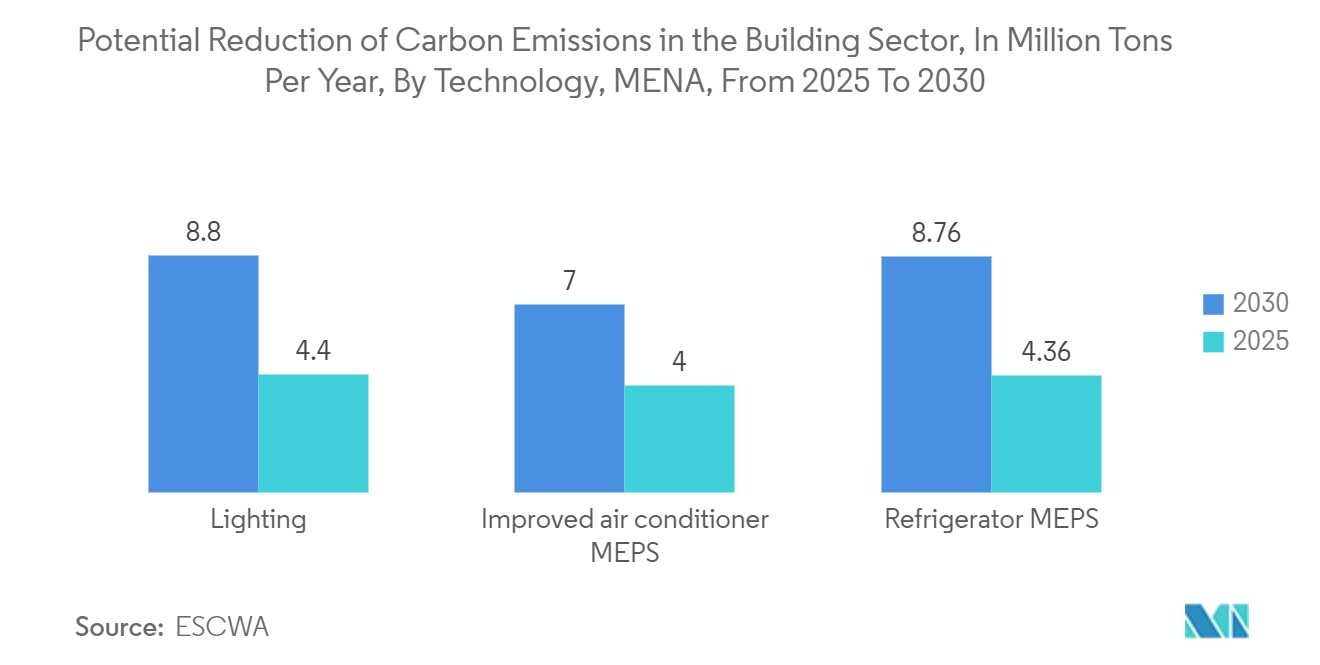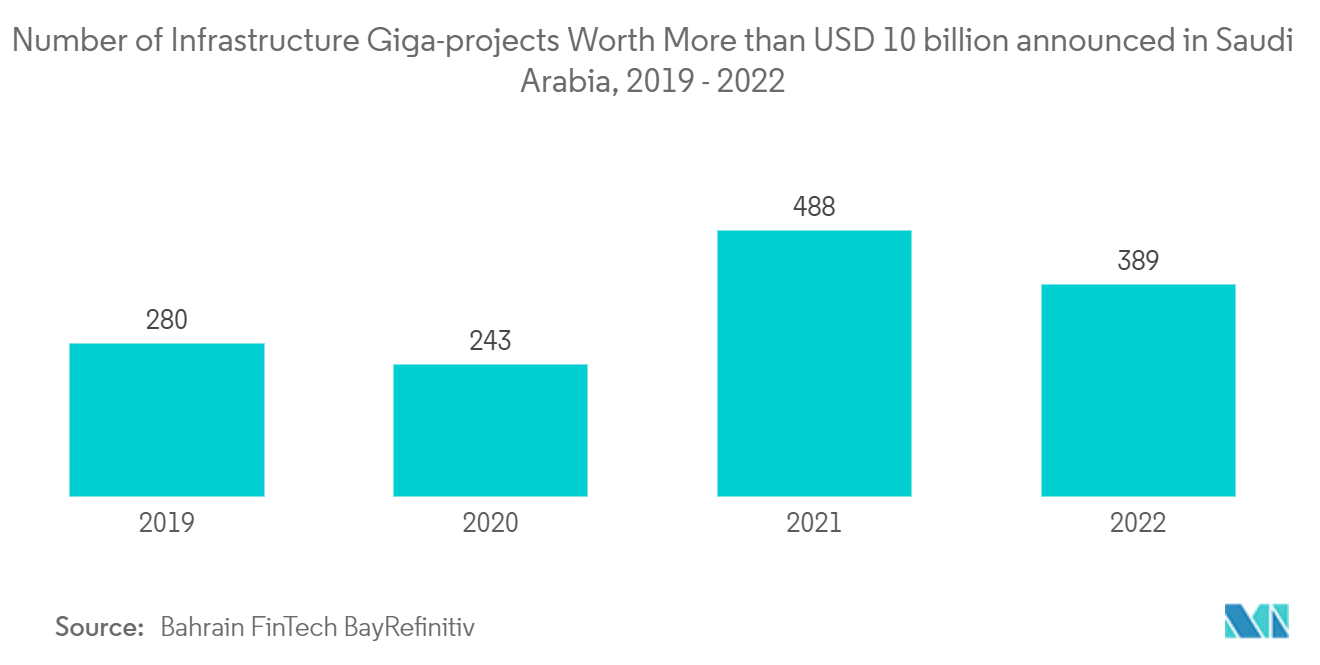Market Trends of MENA Architectural Services Industry
Increasing Demand for Green Buildings to Drive the Market
- The growing demand for green building services, which are intended to produce sustainable structures using ecologically responsible procedures and materials, is the fundamental force behind the growth of the architectural industry. Factors that are triggering global green building activity include market demands, the need to create healthier buildings, reduced energy consumption and lower operating costs, environmental regulations, and local competition.
- Green construction materials consume less water, require less maintenance than comparable items, and can improve a building's sustainability and efficiency through lower carbon emissions. Green building materials are used primarily for structural, exterior, and interior applications, and their use is spreading across numerous industries, including in the construction of residential and non-residential structures.
- There are many benefits to green construction. Riyadh is an essential site undergoing a large number of infrastructure developments. The Saudi government and Ministry of Housing's efforts to provide affordable housing units under Vision 2030 are evidenced by schemes launched by ROSHN in Riyadh and Jeddah. The Housing Program focuses on increasing the percentage of Saudi families that own houses to 70% by 2030. Rising business activities in Riyadh are boosting demand for residential units. Some other upcoming mega projects in Saudi Arabia include the King Abdullah Financial District, Kingdom City, and Jazan Economic City, encouraging large-scale investments into construction and fit-out projects in the next decade.
- According to ESCWA, it is expected that the carbon emissions from lighting technology in the Arab building sector will reduce by 8.8 million ton per year by 2030. The construction of green buildings and energy efficiency are considered important by the government and city planners in the region.
- Factors boosting the region's green building activity include the need to create healthier buildings, lower energy consumption and operating costs, environmental regulations, and local competition. The rising focus of individuals on going green is also driving the market. Thus, the increasing demand for green buildings in the region is anticipated to create new architectural service opportunities.

Saudi Arabia to Hold Major Market Share
- According to a recent Ventures report commissioned by INDEX Saudi Arabia, Saudi Arabia accounts for almost 32% of the total GCC interior design market spending, amounting to USD 3.00 billion. Saudi Arabia is the biggest investor across the Gulf in healthcare and educational property fit-outs, and the residential sector leads the country in interior design and services.
- The healthcare end-use vertical is witnessing the integration of artificial intelligence (AI) into architectural techniques, helping regional vendors find innovative solutions to address the current housing challenge. Architects and engineers leverage AI algorithms to create efficient interior and exterior designs, enhancing building performance. For instance, the NKY company has extensive experience in hospital design, concentrating the interiors around patient-centered care to maximize the needs of the patients. NKY's hospital interior design experience includes Turkey's 370,000m² Mersin Integrated Health Campus.
- In Saudi Arabia, the creation of smart cities is enabled by public, private, and non-profit sector organizations. Saudi Arabia's National Transformation Program (NTP) has made significant progress on the digital front. The National Industrial Development and Logistics Program (NIDLP) focuses on improving industries' competitiveness and efficiency by incorporating Industry 4.0. Digital technologies such as cloud computing, big data, the Internet of Things (IoT), edge computing, AI, robotics, and 3D printing are critical to the region's smart city development.
- Urban planning services in Saudi Arabia are vital for improving the institutional and public landscape, focusing on smart control systems, smart parking, housing, community management systems, and intelligent land and asset management systems. Using sensors helps urban city planners create an accurate and comprehensive picture of pedestrian-vehicle interactions, waste disposal, environmental preservation, infrastructure management, and intelligent disaster management.


